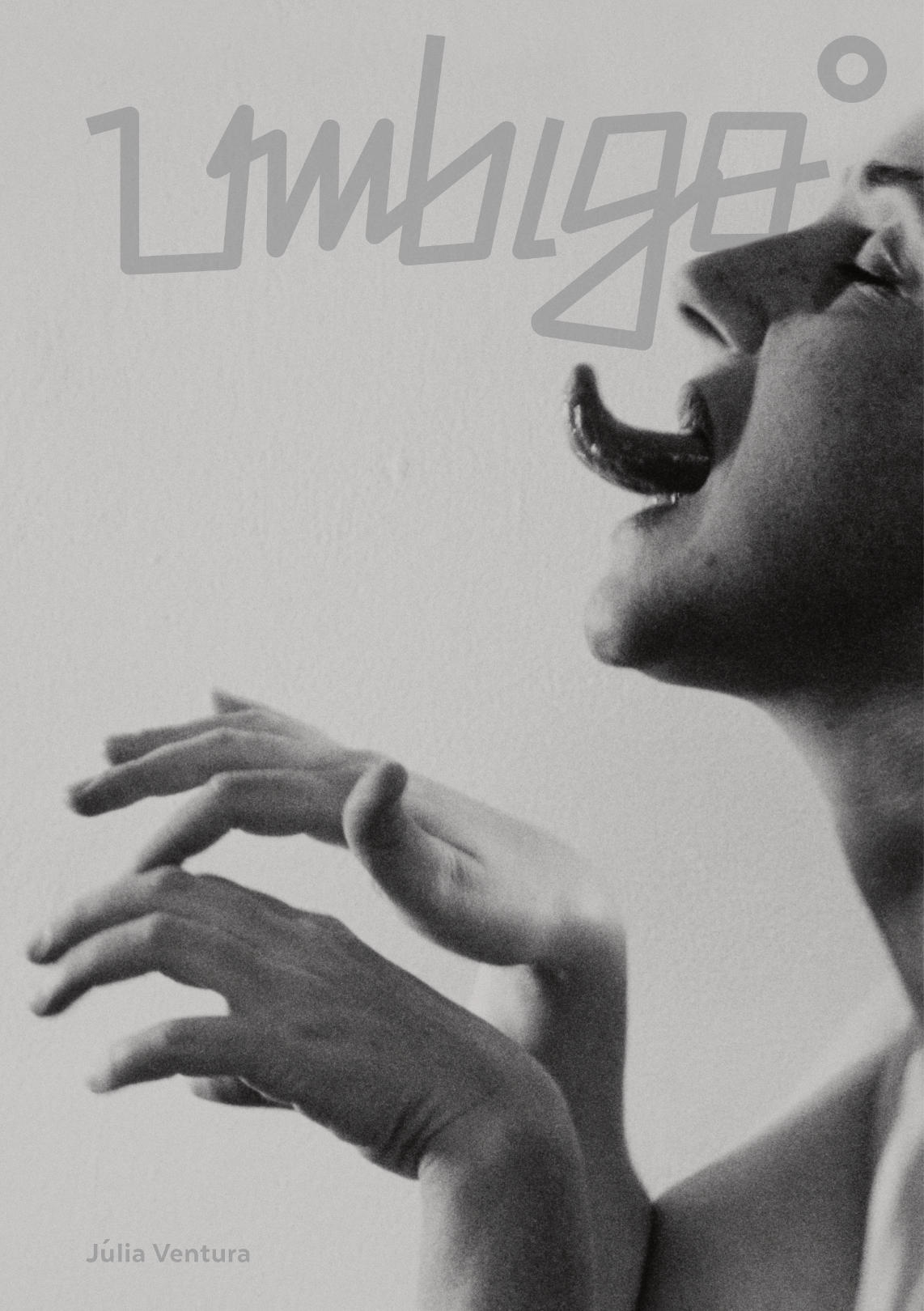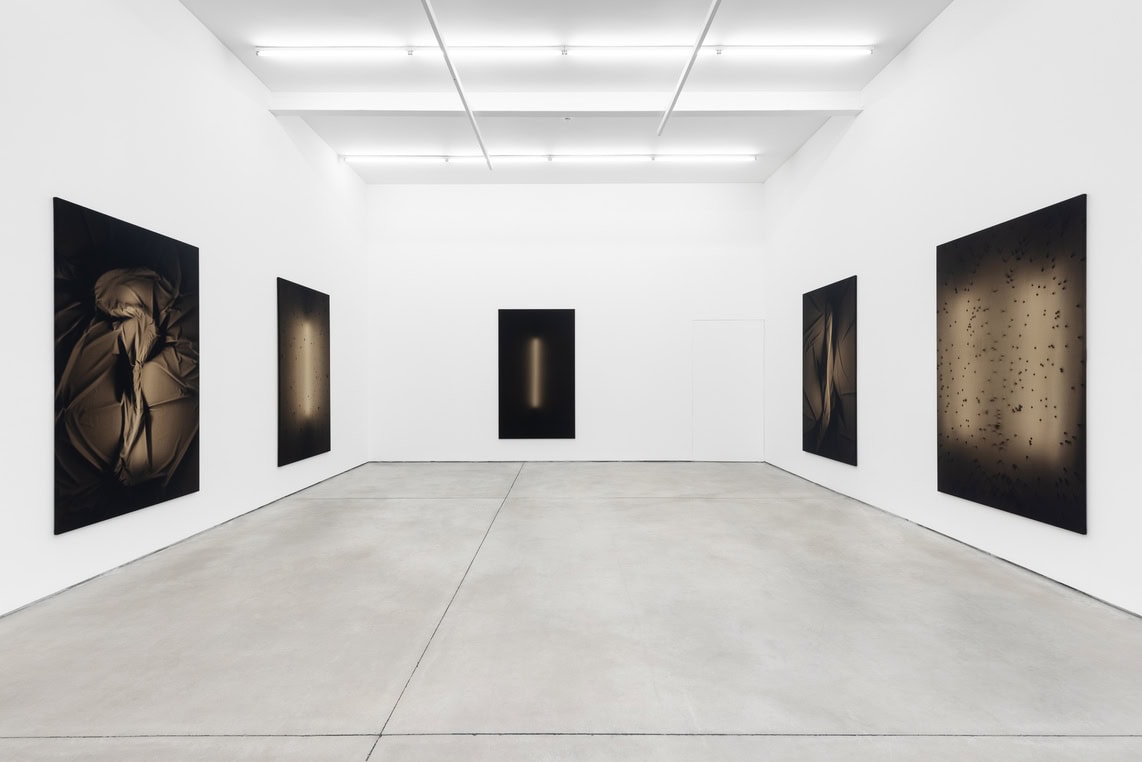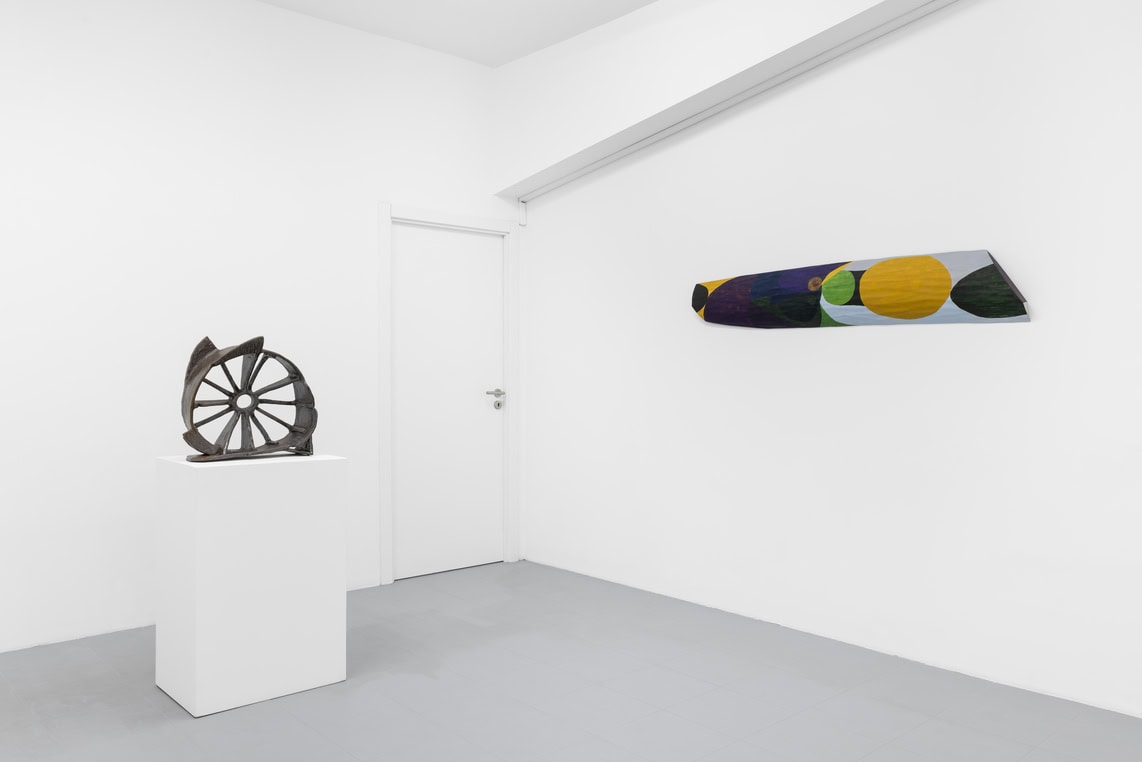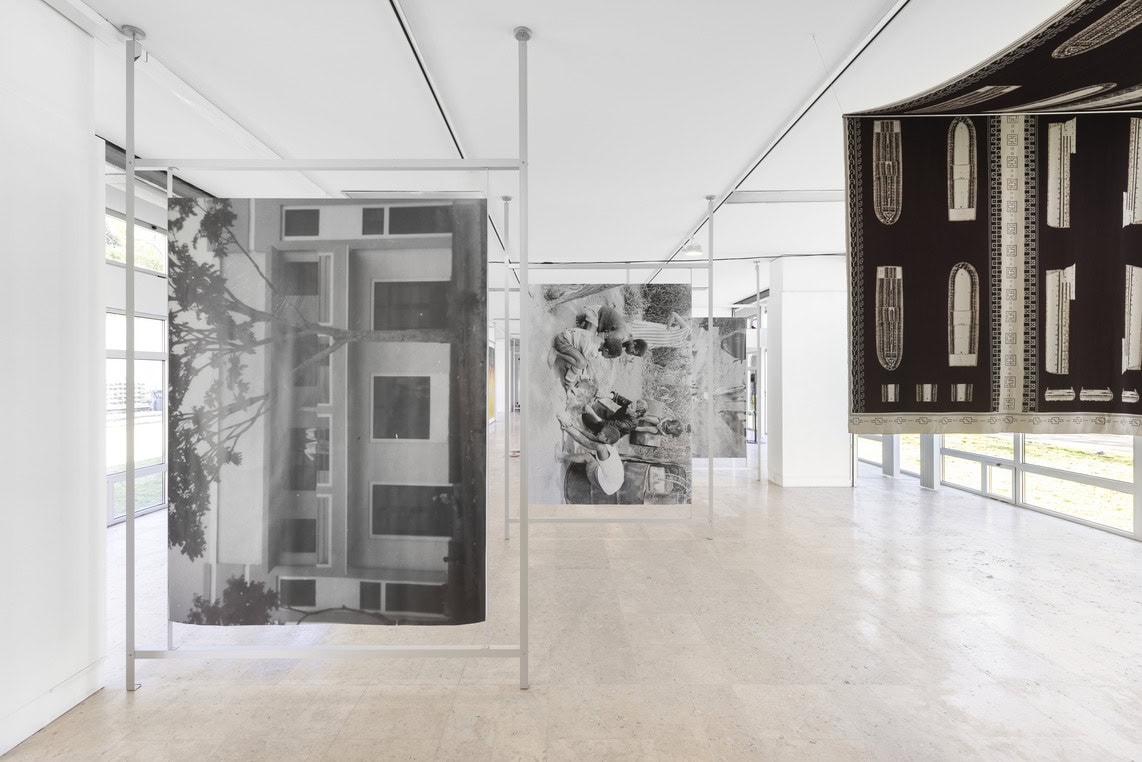Nampula Macua Socialismo is a double historical event: it celebrates the fiftieth anniversary of Mozambique’s independence (1975-2025) and the completion of an in-depth project by Manuel Santos Maia, bringing to a close “25 years of research into the history of his family’s ties with Mozambique (where the artist was born in 1970) and African cultures, particularly the Macua one”[1].
As we walk through, we come face to face with a floating fabric. Towering above our heads are blueprints of ships built and used in the transatlantic slave trade. The fabric surrounds us in different times – among digital mobile phone images, exotic plants and a chest with Indo-Portuguese-African decorative motifs – ascending and eventually plunging to eye level. Hovering in the exhibition grounds, the fabrics are like shadows of the past, reminiscent of the consequences of colonialism that seep into contemporary times.
Central to Nampula Macua Socialismo is the family voice, which is humanised and entwined with the ‘’domination regimes and conflicts, cultural exchanges and miscegenation, the ceaseless processes of socialisation to which we are all heirs‘[2]. How is the reverberation of a space-time that persists under colonial domination? Indeed, affective memory is anachronistic, which is why different times intersect within human bodies. This relationship in the exhibition contains different elements: the usury seen on the childhood photographs in Nampula – now digitised and magnified, revealing not only the images’ physical deterioration, but also the ambivalence of their two-fold fragility and the strength of the memories resisting oblivion, – a letter written by his grandmother, the Umbila wood plaques (from the crates shipped on the journey back to Europe, during decolonisation and the return to Portugal), the formwork/mould of a small-scale replica of his childhood home within a wheelbarrow (traditionally involved in moving materials in a construction context) and, also, as a counterpart, the replica of a casa dos pequenos afectos, a scale bronze sculpture that now fits between our hands.
Back to the letter, which is the centrepiece of the artist’s exhibition. We dive into Celeste’s daily life – waking up and going to bed, farming, taking over the family shop, sewing and crocheting, becoming a widow at 49, the flowers inhabiting a hybrid space, where cultures and places blend together in the interstices of the world (‘roses, daisies, ferns, maidenhair ferns, bougainvillea, strelitzias, pansies’[3]), a God from beyond the church, lingering in other places, as in the love for her grandson and husband, both alive inside her. This is the secret of affection. And then, finally, the cuisine, ‘Portuguese, African, Indian’[4], and the Macua language emerging to close the end of the letter. Simultaneously, in the interstices, we find the labouring presence of Pedro, ‘who helps her do the laundry [and] Amisse, in the kitchen’[5], all of whom were part of the domestic everyday life of the house.
This approach takes as its starting point the very intimacy that reveals, beyond the word, the subtle interpretations rewritten in a continuous social, reflective and personal process. By symbolically wearing Celeste’s skin, smelling Indian saffron and listening to the song ‘Nifungo (A Chave da Casa)’ by the Mozambican band Eyuphuro (1990), we can subtly absorb the artist’s meanings, the absences and silences illuminated between and beyond the official colonial narrative.
Manuel Santos Maia’s Nampula Macua Socialismo is at Galeria Municipal Quadrum in Lisbon until April 20.
[1] Exhibiton text of Nampula Macua Socialismo.
[2] Ibidem.
[3] Carta de Celeste Gil Marques (date not confirmed).
[4] Ibidem.
[5] Ibidem




